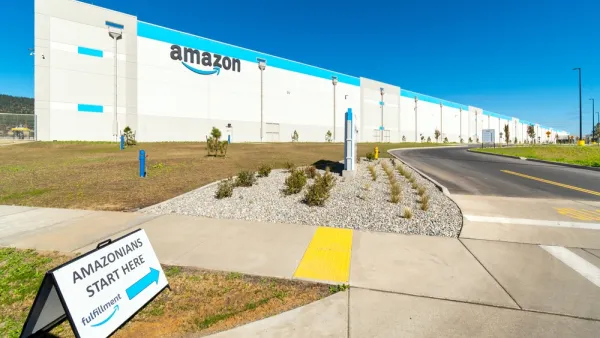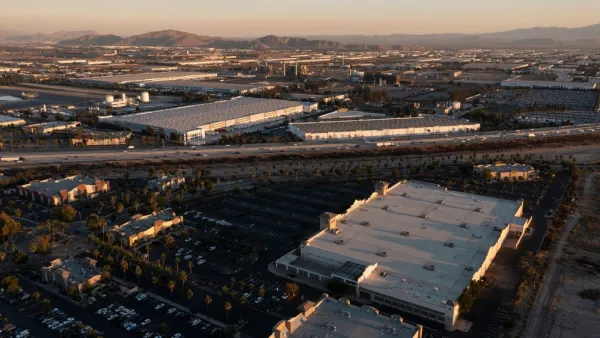As e-commerce giants like Amazon build more and more facilities, advocates say a regional approach is needed to prevent sprawl and look beyond local benefits.

"A current surge in warehouse construction is raising concern among planners and environmentalists that scarce open space is being eaten up by giant warehouses that generate truck traffic on rural roads, increase contaminated stormwater runoff from more paved surfaces, and industrialize the state’s few remaining rural enclaves," reports Jon Hurdle in NJ Spotlight. But the warehouses also bring jobs and taxes, incentives valued by local leaders who object to the prospect of losing control of land use decisions in their jurisdictions. With Amazon as New Jersey's largest employer, advocates say "the trend raises wider issues that should also be addressed by county or statewide authorities" rather than left up to "myriad local governments" narrowly focused on their own "fiscal self-interest."
Tim Evans, director of research for the nonprofit New Jersey Future, argues that "a 'regional perspective' is needed to ensure that increasing demand for the storage of imported goods does not result in the development of land that is better used for farming or recreation, and that the most suitable land for warehousing — such as that near the ports of Newark, Elizabeth and Bayonne — does not get used for another purpose that could easily be done elsewhere."
As a home-rule state, New Jersey largely gives local governments the final say over land use decisions, and Evans admits "any attempt to dilute the power of local government over land-use planning would prompt strong pushback." But decisions made at the local level can affect their surrounding area, as seen in Warren County, where county officials have urged municipalities to present a united front in resisting the construction of new warehouse facilities on greenfield land. To Evans and other advocates of regional planning, a regional approach is necessary to "help the state avoid the worst impacts of the warehouse boom which is underpinned by e-commerce and fueled by the COVID-19 pandemic."
FULL STORY: Warehouse sprawl shows need for regional approach to planning, advocates say

National Parks Layoffs Will Cause Communities to Lose Billions
Thousands of essential park workers were laid off this week, just before the busy spring break season.

Retro-silient?: America’s First “Eco-burb,” The Woodlands Turns 50
A master-planned community north of Houston offers lessons on green infrastructure and resilient design, but falls short of its founder’s lofty affordability and walkability goals.

Delivering for America Plan Will Downgrade Mail Service in at Least 49.5 Percent of Zip Codes
Republican and Democrat lawmakers criticize the plan for its disproportionate negative impact on rural communities.

Test News Post 1
This is a summary

Test News Headline 46
Test for the image on the front page.

Balancing Bombs and Butterflies: How the National Guard Protects a Rare Species
The National Guard at Fort Indiantown Gap uses GIS technology and land management strategies to balance military training with conservation efforts, ensuring the survival of the rare eastern regal fritillary butterfly.
Urban Design for Planners 1: Software Tools
This six-course series explores essential urban design concepts using open source software and equips planners with the tools they need to participate fully in the urban design process.
Planning for Universal Design
Learn the tools for implementing Universal Design in planning regulations.
EMC Planning Group, Inc.
Planetizen
Planetizen
Mpact (formerly Rail~Volution)
Great Falls Development Authority, Inc.
HUDs Office of Policy Development and Research
NYU Wagner Graduate School of Public Service





























